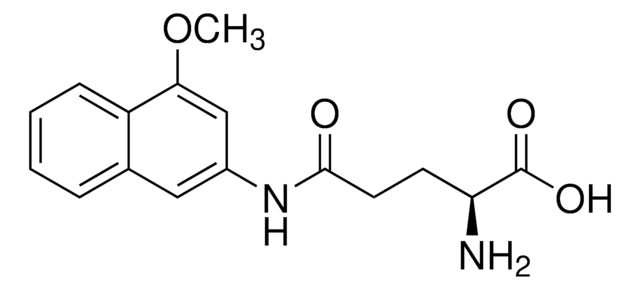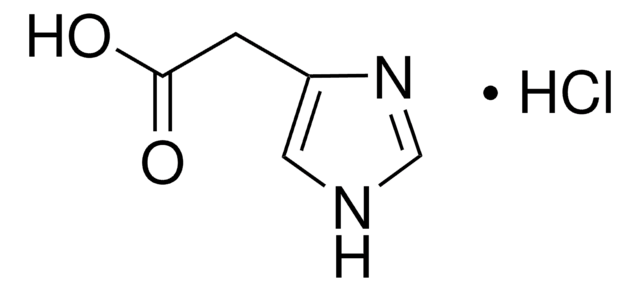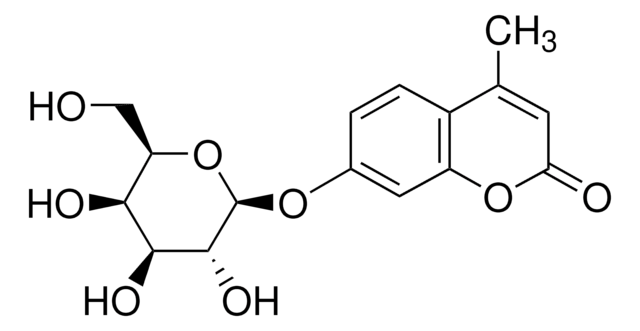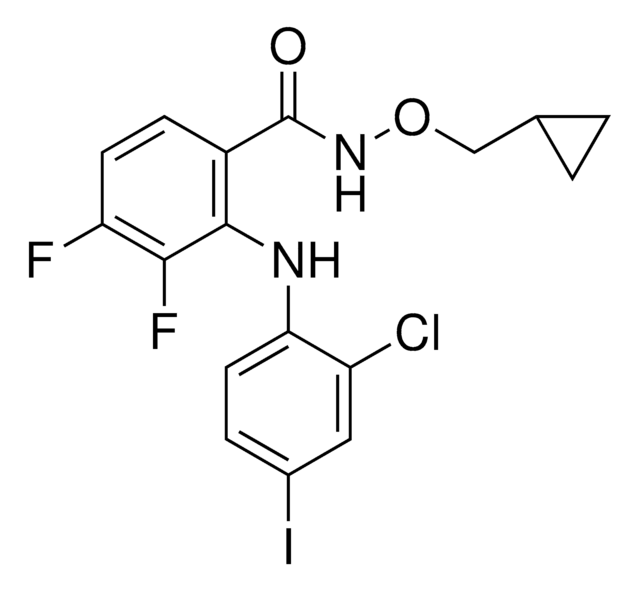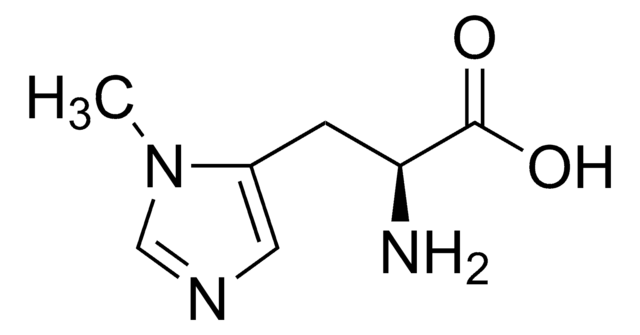H6647
L-Histidinol dihydrochloride
≥98% (TLC)
Sinónimos:
β-Aminoimidazole-4-propanol dihydrochloride, (S)-2-Amino-3-(4-imidazolyl)propanol dihydrochloride
About This Item
Productos recomendados
Nombre del producto
L-Histidinol dihydrochloride, ≥98 (TLC)
Ensayo
≥98% (TLC)
Formulario
powder
color
white to off-white
mp
198-201 °C (dec.) (lit.)
aplicaciones
cell analysis
cadena SMILES
Cl[H].Cl[H].N[C@H](CO)Cc1c[nH]cn1
InChI
1S/C6H11N3O.2ClH/c7-5(3-10)1-6-2-8-4-9-6;;/h2,4-5,10H,1,3,7H2,(H,8,9);2*1H/t5-;;/m0../s1
Clave InChI
FRCAFNBBXRWXQA-XRIGFGBMSA-N
Información sobre el gen
human ... HRH1(3269)
mouse ... HRH1(15465)
rat ... HRH1(24448)
¿Está buscando productos similares? Visita Guía de comparación de productos
Aplicación
- as a reagent in urinary metabolite analysis
- for making DT40 knockout cells, where cells were selected in 1mg/ml histidinol
- for inducing amino acid deprivation in HepG2 cells
Acciones bioquímicas o fisiológicas
Palabra de señalización
Warning
Frases de peligro
Consejos de prudencia
Clasificaciones de peligro
Eye Irrit. 2 - Skin Irrit. 2 - STOT SE 3
Órganos de actuación
Respiratory system
Código de clase de almacenamiento
11 - Combustible Solids
Clase de riesgo para el agua (WGK)
WGK 3
Punto de inflamabilidad (°F)
Not applicable
Punto de inflamabilidad (°C)
Not applicable
Equipo de protección personal
dust mask type N95 (US), Eyeshields, Gloves
Elija entre una de las versiones más recientes:
¿Ya tiene este producto?
Encuentre la documentación para los productos que ha comprado recientemente en la Biblioteca de documentos.
Nuestro equipo de científicos tiene experiencia en todas las áreas de investigación: Ciencias de la vida, Ciencia de los materiales, Síntesis química, Cromatografía, Analítica y muchas otras.
Póngase en contacto con el Servicio técnico